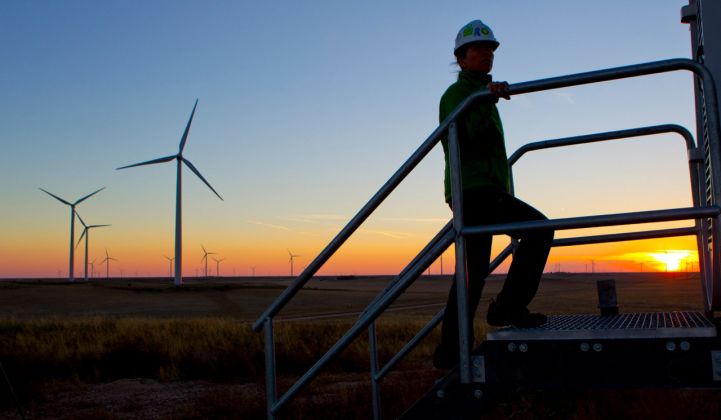U.K. oil major BP doesn’t expect substantial income from its low-carbon business activities this side of 2025, according to CFO Murray Auchincloss.
Speaking on the company’s full-year results call with analysts on Tuesday, Auchincloss said the company still is not expecting its low-carbon efforts to produce “a ton of EBITDA [earnings before interest, taxes, depreciation and amortization],” the firm’s preferred measure for income, this side of 2025, describing it as a “longer-wavelength business.”
The company announced a net-zero ambition in February 2020 as part of a wider transformation that would increase its gas and low-carbon business at the expense of some of its hydrocarbon activity.
“As far as EBITDA comes from low carbon...that isn't really something we're focused on right now, to be honest; we're in build mode,” said Auchincloss, adding that income from its low-carbon projects would begin to replace revenue from its hydrocarbon business in the late 2020s and early 2030s.
Later in the call, CEO Bernard Looney reiterated that “material” revenue from green hydrogen is expected even further out, naming 2030 as a target. The company is working on several early-stage hydrogen projects including a 1.5-gigawatt wind- and solar-powered site in Australia that would export ammonia to Asia.
2020 takes its toll
Looney, who will mark one year in the top job on Friday, reflected on an incredibly difficult 2020 for the firm.
The impacts of COVID-19 loomed large in the company’s 2020 results, with a loss of $5.7 billion recorded for the quarter. Full-year losses were $20.3 billion. Oil demand fell by 9 million barrels a day. Direct impacts of the pandemic cost it $900 million and also delayed major fossil fuel projects.
As part of its cost-cutting measures, BP has shed 10,000 jobs. It has also made several substantial divestments. Its petrochemicals business was sold to Ineos for $5 billion. This week it sold a 20 percent stake for a gas block in Oman to a state-owned energy company from Thailand for $2.6 billion.
Progress on low-carbon initiatives
BP added gigawatts to its pipeline of potential low-carbon energy projects throughout 2020. But it has been outspent by Total, as has fellow oil giant Shell. The French major made a series of high-profile gigawatt-scale acquisitions during the last 12 months that saw it pull away from its rivals.
BP is targeting a portfolio of 50 GW of renewable energy assets by 2030 with returns of at least 8 to 10 percent from each project.
BP finalized its offshore wind joint venture with Norway’s Equinor last week. The pair is developing 4.4 gigawatts of offshore wind leases in the U.S. In January, Empire Wind 2 and Beacon Wind 1 were selected by New York state to provide 2.5 GW of power. Empire Wind 1 was selected to provide another 816 MW back in July 2019.
Another 50-50 partnership, Lightsource BP, is building out a 17 GW pipeline of solar projects. It took 1.4 GW worth of projects to financial close during 2020, according to BP’s results. The company has added 6 GW to its pipeline. Last month it secured a portfolio of 14 projects in Spain totaling 1.06 GW. They are expected to be operational between 2023 and 2025.
Lightsource BP is targeting an installed capacity of 10 GW by 2023, giving it three years to add another 7 GW. Looney revealed that Lightsource BP has now built 30 projects that met the 8 to 10 percent returns threshold. “From my perspective, I find it amusing that people seem to be so focused on this number, because for us, it’s not a challenge,” Lightsource BP CEO Nick Boyle said in an interview with Greentech Media last year.
This story has been updated to clarify that the $5.7 billion loss was quarterly, not annual.




